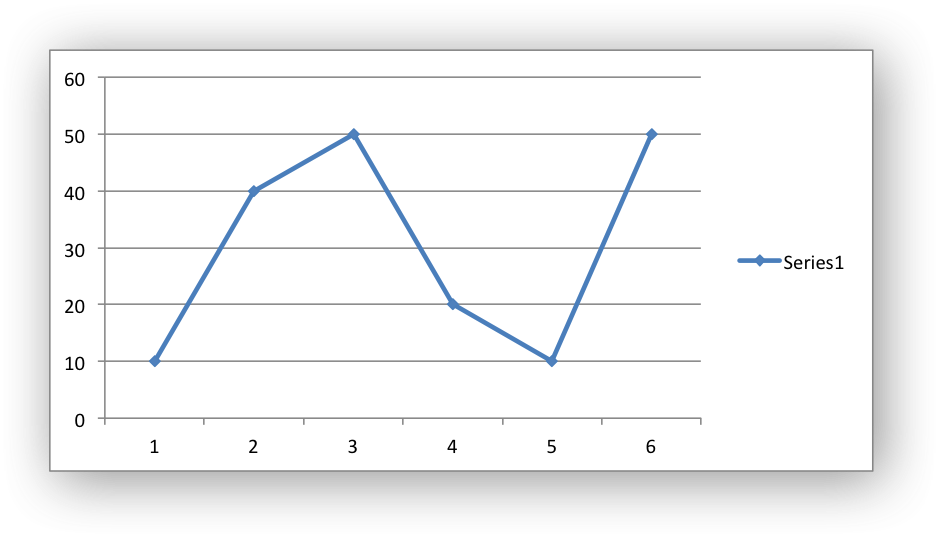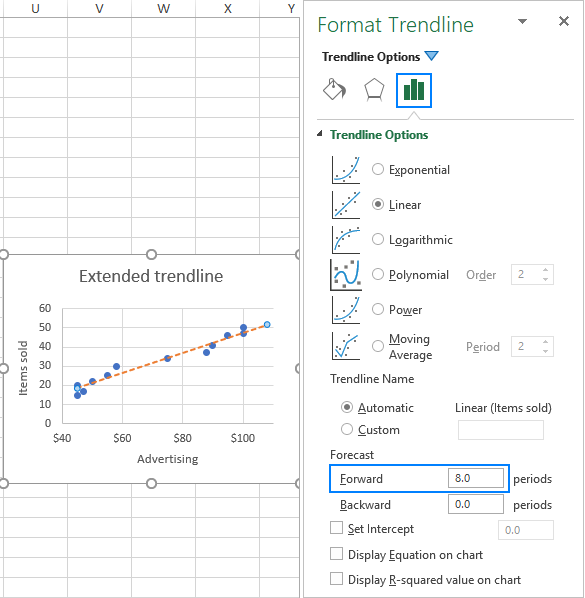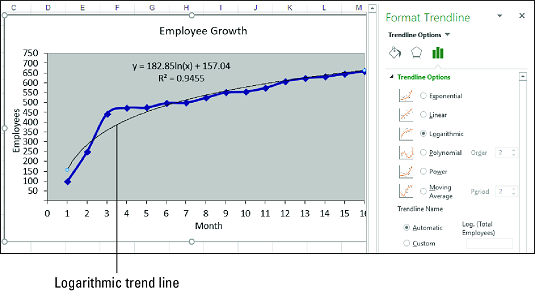
Now select the Display Equation on Chart box and the Display R-squared value on Chart box. Notice that the Linear button is already selected.This will display the option shown in Figure 7. Click the Chart Elements button next to the upper-right corner of the chart.When you do this, all the data points will appear highlighted. Do this by clicking on any one of the data points. To do this you first need to "activate" the graph. A trendline represents the best possible linear fit to your data.

Your next step is to add a trendline to the plotted data points.To change the titles, click the text box for each title, highlight the text and type in your new title (Figure 6).Note that it is important to label axes with both the measurement and the units used. Click on Axis Titles (select Primary Horizontal Axis Title and Primary Vertical Axis Title) to add labels to the x- and y-axes.The graph should be given a meaningful, explanatory title that starts out “Y versus X followed by a description of your system.Switch to the Design tab, and click Add Chart Element > Chart Title > Above Chart.


In this exercise, the spreadsheet program Microsoft Excel © will be used for this purpose.

\Ĭomputer spreadsheets are powerful tools for manipulating and graphing quantitative data. This equation expresses the mathematical relationship between the two variables plotted, and allows for the prediction of unknown values within the parameters. Here \(m\) represents the slope of the line, and \(b\) represents the y-intercept, as shown in the figure below. If there is a direct, linear relationship between two variable parameters, the data may be fitted to the equation of line with the familiar form \(y = mx + b\) through a technique known as linear regression. Second, via appropriate analysis, they provide us with the ability to predict the results of any changes to the system.Īn important technique in graphical analysis is the transformation of experimental data to produce a straight line. First, plotting a graph provides a visual image of data and any trends therein. Graphs are useful tools that can elucidate such relationships. In several upcoming labs, a primary goal will be to determine the mathematical relationship between two variable physical parameters.


 0 kommentar(er)
0 kommentar(er)
